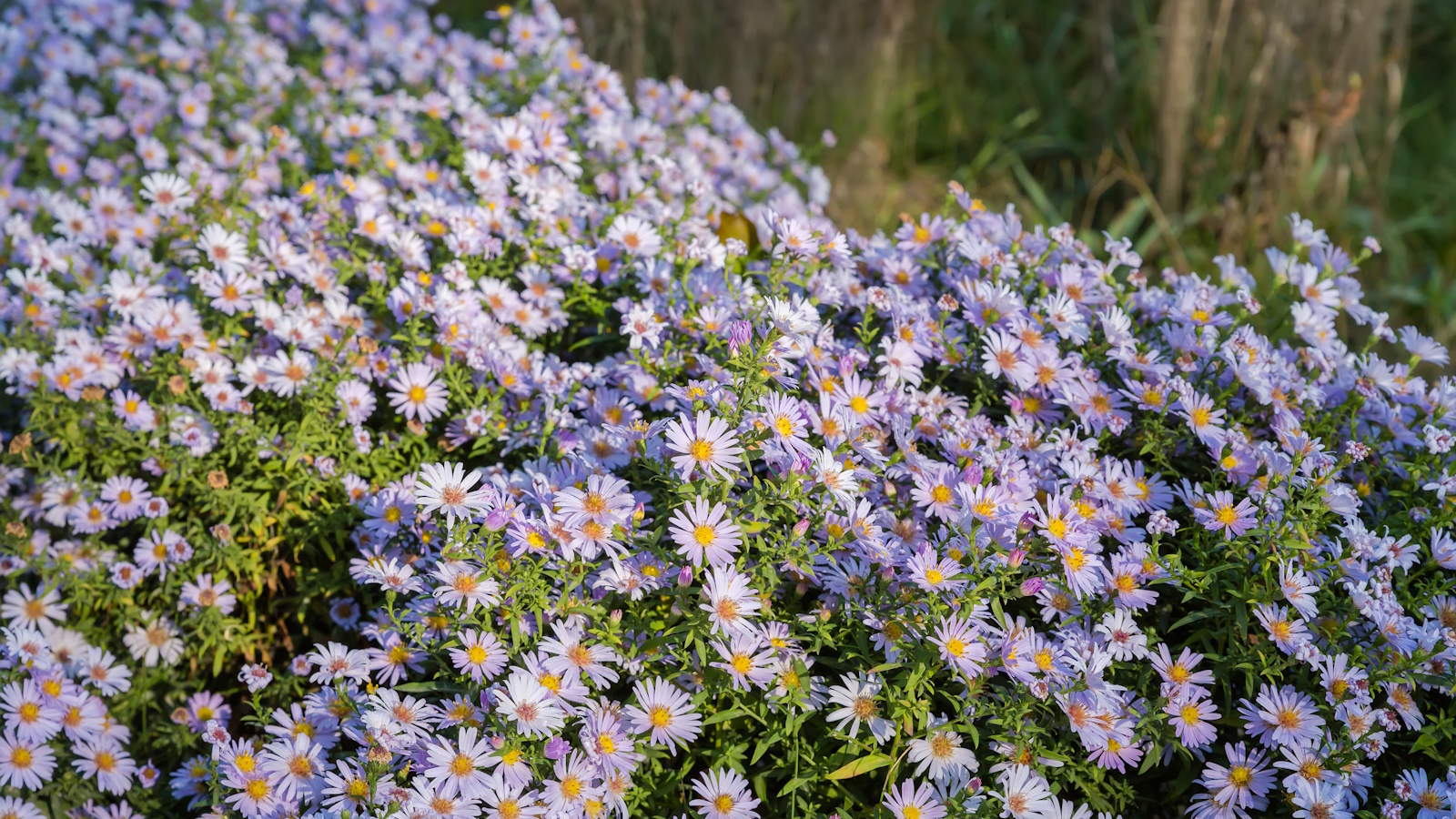
While high summer tends to be the time when our garden borders reach their colorful climax, many popular perennials can keep the show going long into the fall months. Think golden-yellow blooms of black-eyed Susan and the lilac-purple petals of classic aster varieties. Even as the light draws in and the days get shorter, late-season color can still be found.
Some of the best fall-blooming native plants will do just this, extending the gardening season right through until November or even December in some regions. Native perennials thrive at this time of year, and while they might lose a tiny bit of their vigor as cold and wet weather sets in, embracing these plants is sure to enhance your garden aesthetic.
So, if you are looking for plants for fall color or fall flowers for pots, consider incorporating some of the following native options that will not only look good but will also be a hit with local pollinators.
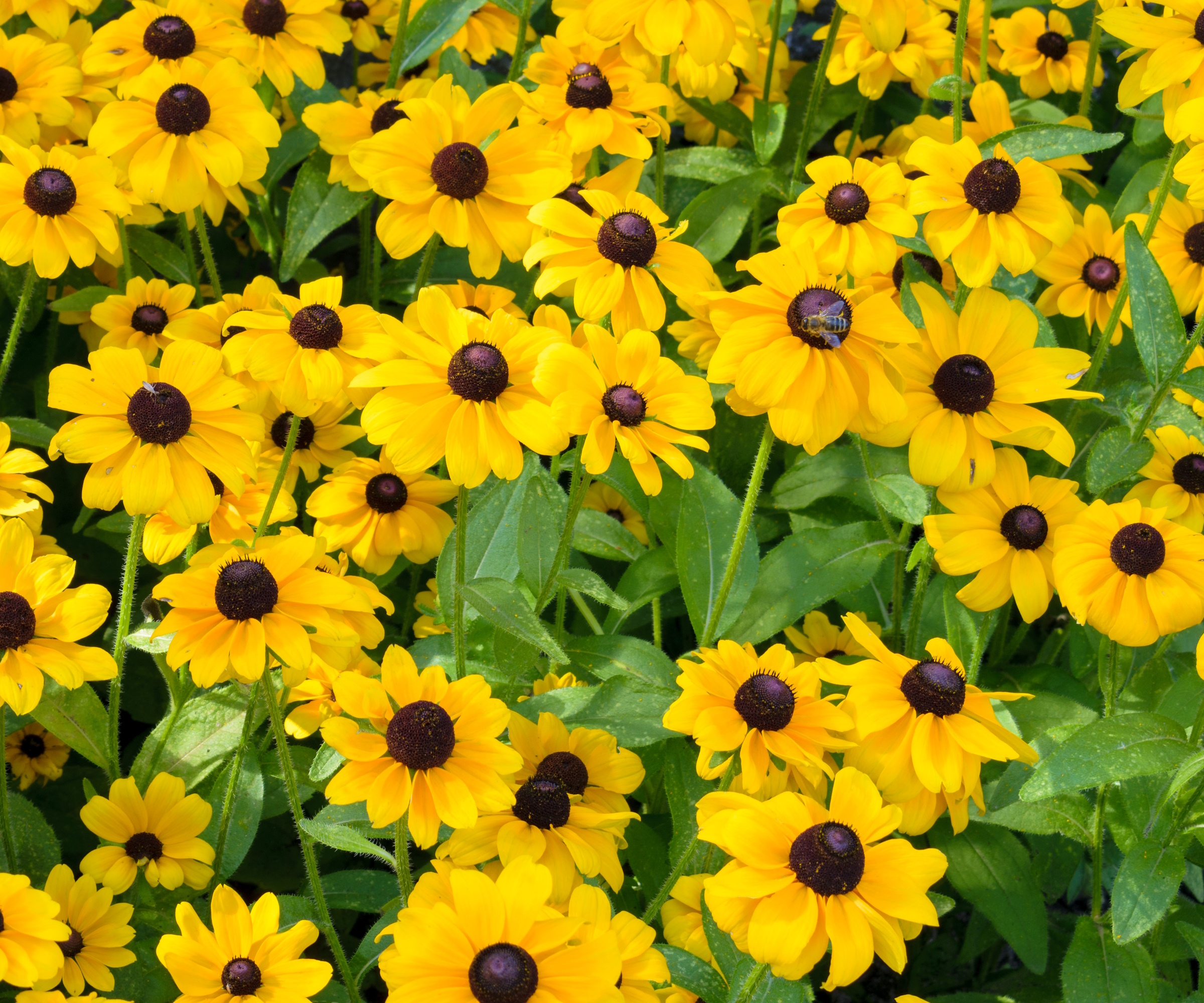
7 best fall-blooming native plants
The following fall-blooming native plants will prove resilient and hardy, able to grow in cooler, northern zones despite challenging temperature fluctuations. What's more, they will also put on a colorful firework finale as your garden borders shut down for winter.
1. Asters
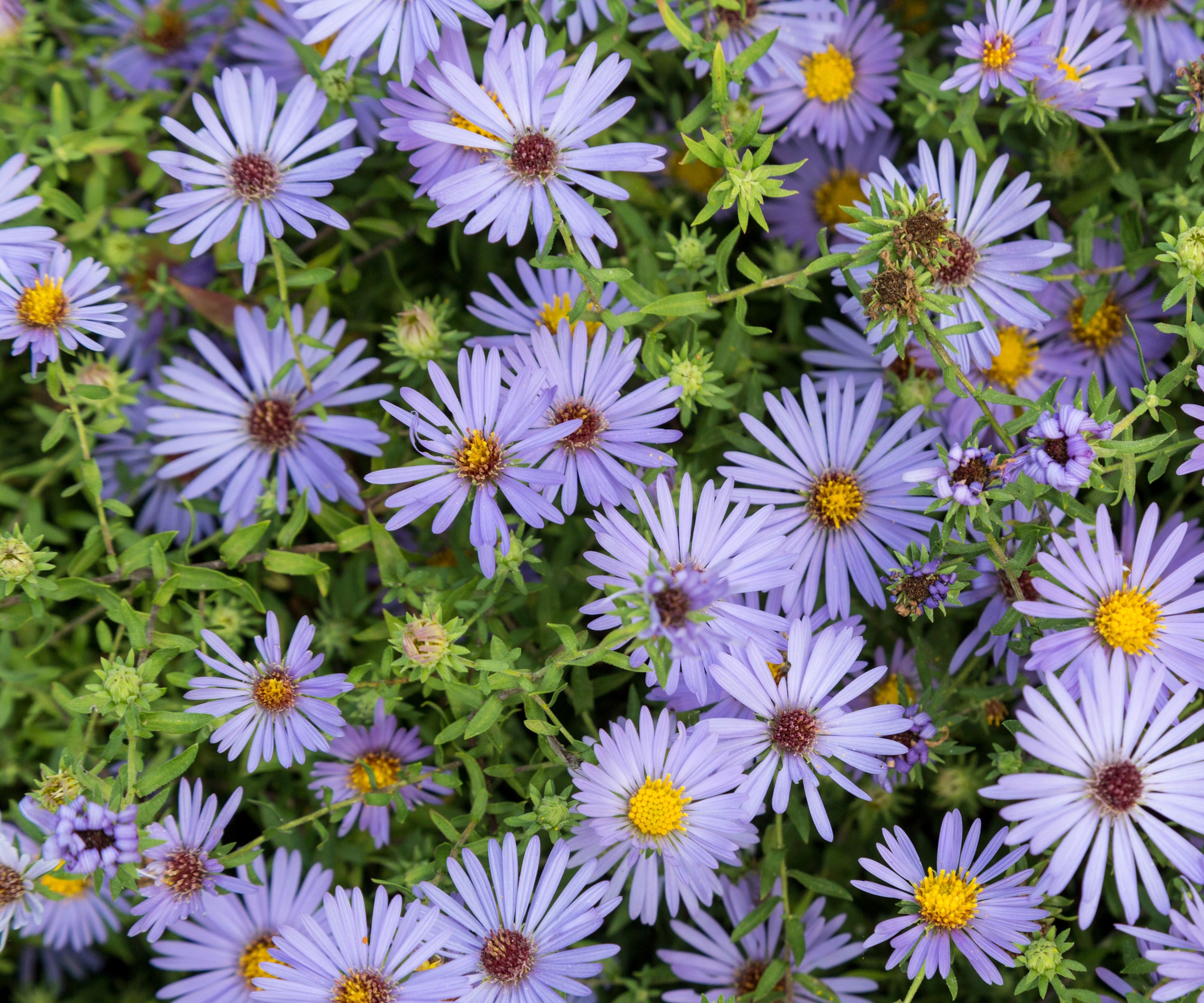
If you are looking for some of the longest-flowering perennials, asters are a great native option. Fully cold-hardy, asters can generally grow from US hardiness zone 3 plus, although in cooler zones, I recommend mulching your plants in late fall to provide some protection from heavy snow and ice.
When working as a professional gardener at a large country estate in Wales, asters were among the final perennials left standing in the garden borders, with flashes of pink, purple and white helping to prolong the growing season. Purple aster live plants are available from Amazon.
Many taller varieties can reach up to four to six feet tall, so supporting your aster plants is crucial. In my experience, they can be flattened by heavy rainfall or wind in the fall months, so use plant supports to keep them upright and blooming for as long as possible.
There are many native aster varieties, although one of my favorites is the blue wood aster, Aster cordifolius 'Avondale'. Native to the eastern United States, it is found in meadows and forests and will tolerate part-shade. Blue wood aster seeds are available from Walmart.
2. Black-eyed Susan
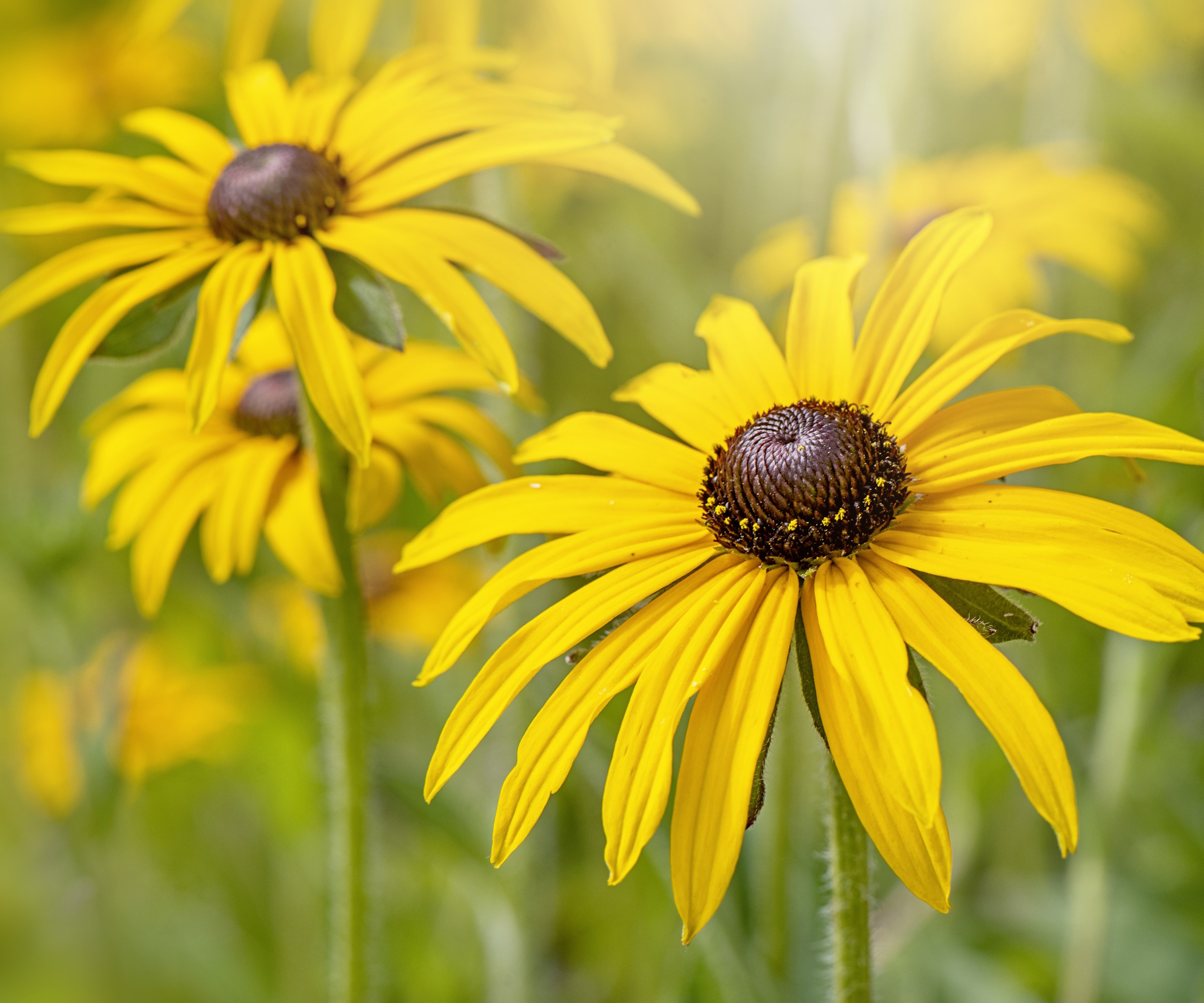
Hardy and resilient, black-eyed Susan plants are impactful perennials wherever they are grown. These native plants will thrive in different climates and situations, tolerating cold weather down to US hardiness zone 3. Black-eyed Susan live plants are available to order from Walmart.
'Black-eyed Susans, or Rudbeckias, will reliably return year after year,' says Sam Niemann, garden expert and founder of Grown by Design, a boutique landscape design firm based in San Diego, and Bleume, a plant fertilizer start-up. 'These native perennials can often be seen growing along roadsides and freeways, brightening up the landscape with their golden blooms.'
Sam recommends the 'Denver Daisy' variety, Rudbeckia hirta, 'Denver Daisy'. With 'rich, golden flowers that go on and on blooming, it is a solid native addition to any border.' 'Denver Daisy' seeds are available from Amazon, ideal for sowing under cover from February.
3. Clematis virginiana
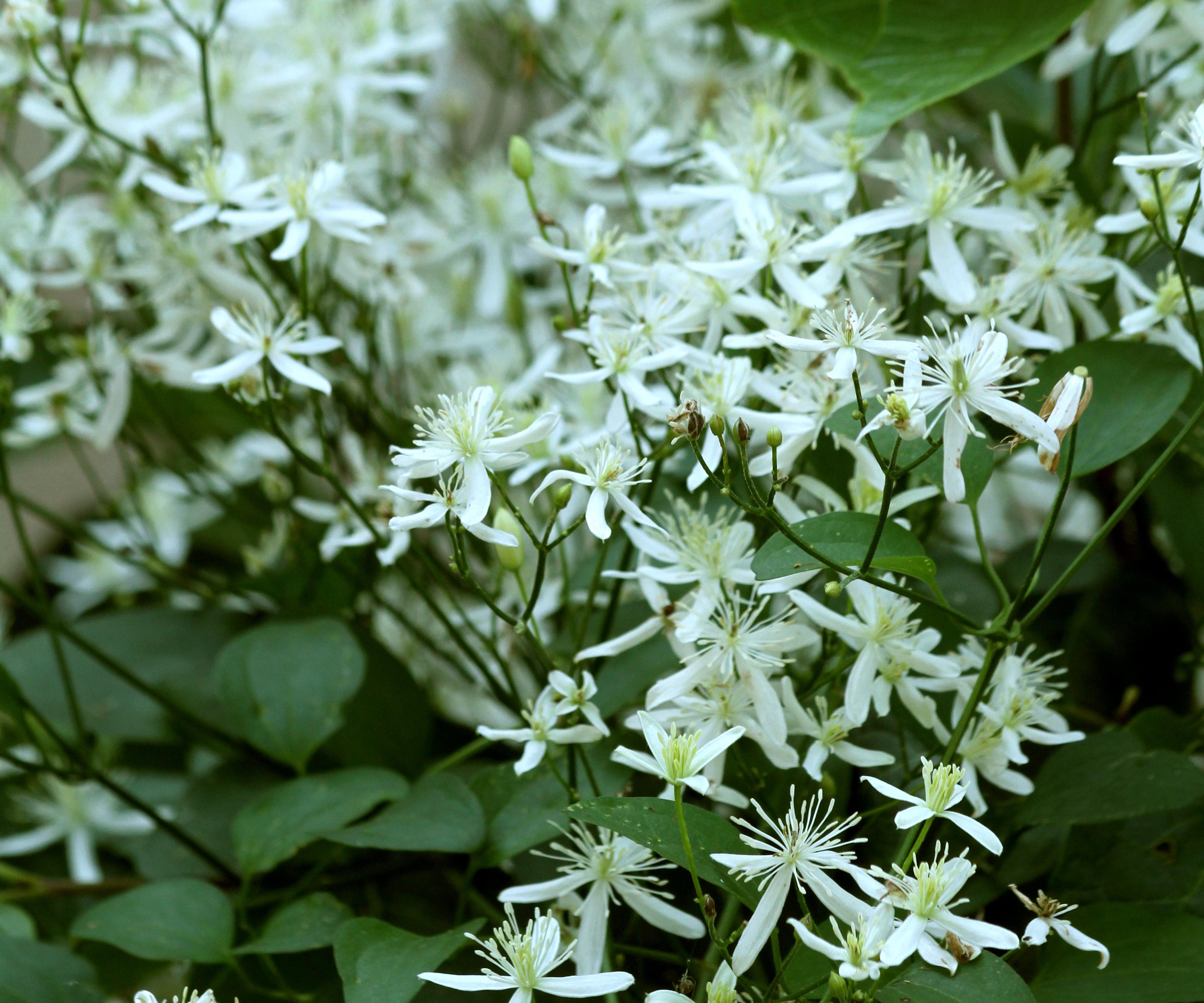
While not as popular as some other more well-known species, Clematis virginiana is no less impressive. From late summer, clusters of fragrant white flowers open and bloom for one to two months, lasting late into the fall. What's more, native pollinators - including halictid bees and butterflies - that remain active late in the season, will also be drawn to these nectar-rich blooms.
This native plant is fully hardy and can be grown from US hardiness zone 3 to US hardiness zone 9. It is typically found growing in woodlands, meadows and riverbanks, and can reach an impressive size.
Ranging in length from 10 feet to 20 feet, I would advise planting this vine near a wall or fence where it can grow freely and unrestricted. Clematis virginiana seeds are available from Amazon.
This fertilizer is designed to increase bloom production, encouraging your native perennials to continue blooming from spring until fall.
4. Goldenrod
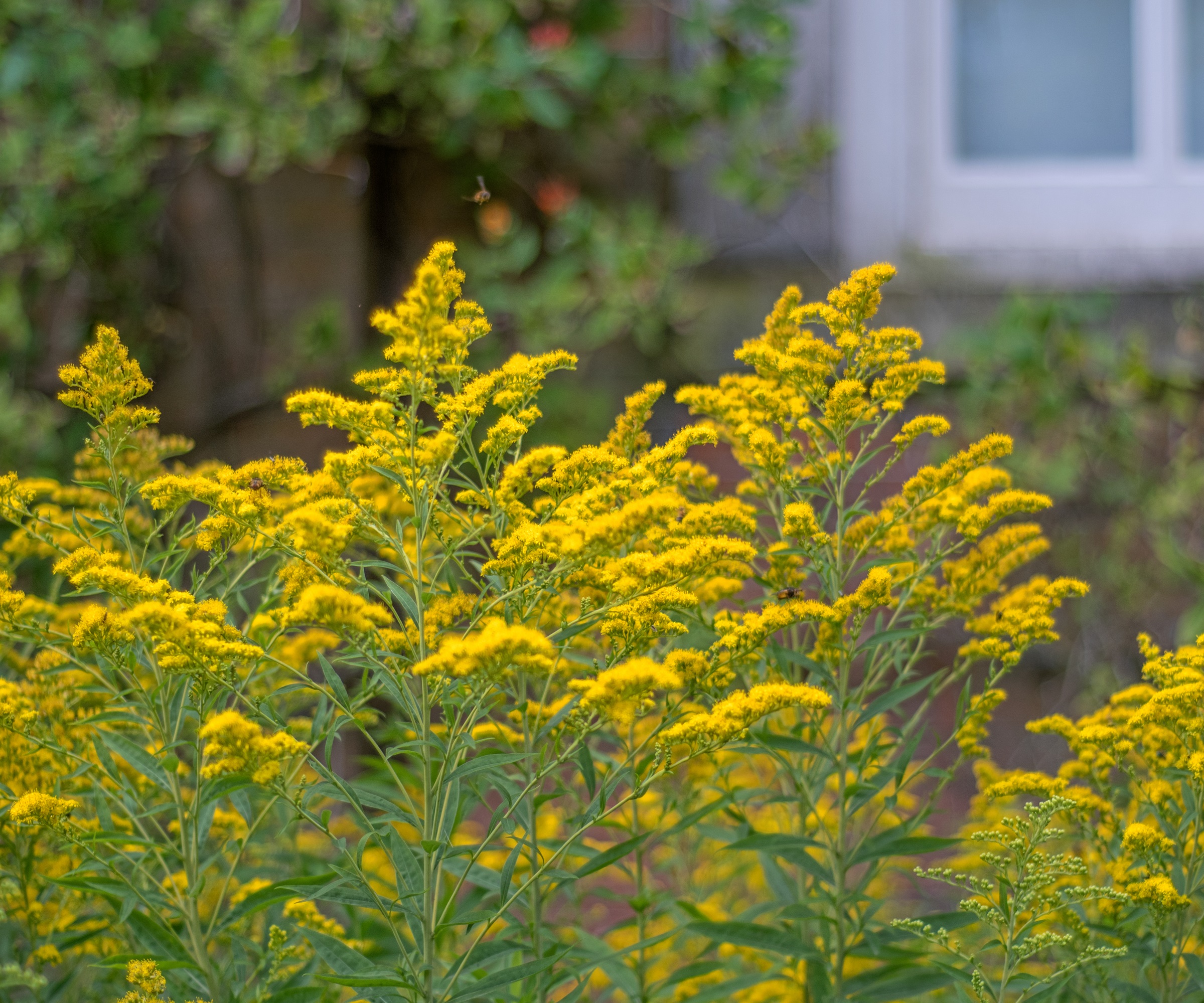
Goldenrod is prized for its bright yellow flower spikes that will be sure to add color to the yard in late summer and fall. As tall perennial flowers, goldenrod plants can reach up to five feet tall thereby adding structure in garden meadows or towards the back of prairie planting borders.
Goldenrod, Solidago, is part of the Asteraceae plant family, commonly known as the daisy group. As such, it produces masses of yellow daisy-like blooms in summer and fall, providing vital nectar for bees and butterflies still active in September and October.
Thriving in sunny yards, goldenrod is fully hardy and can be grown in US hardiness zone 2 to zone 8. Goldenrod seeds are available from Amazon and are ideal for direct sowing in the fall months.
5. Verbena
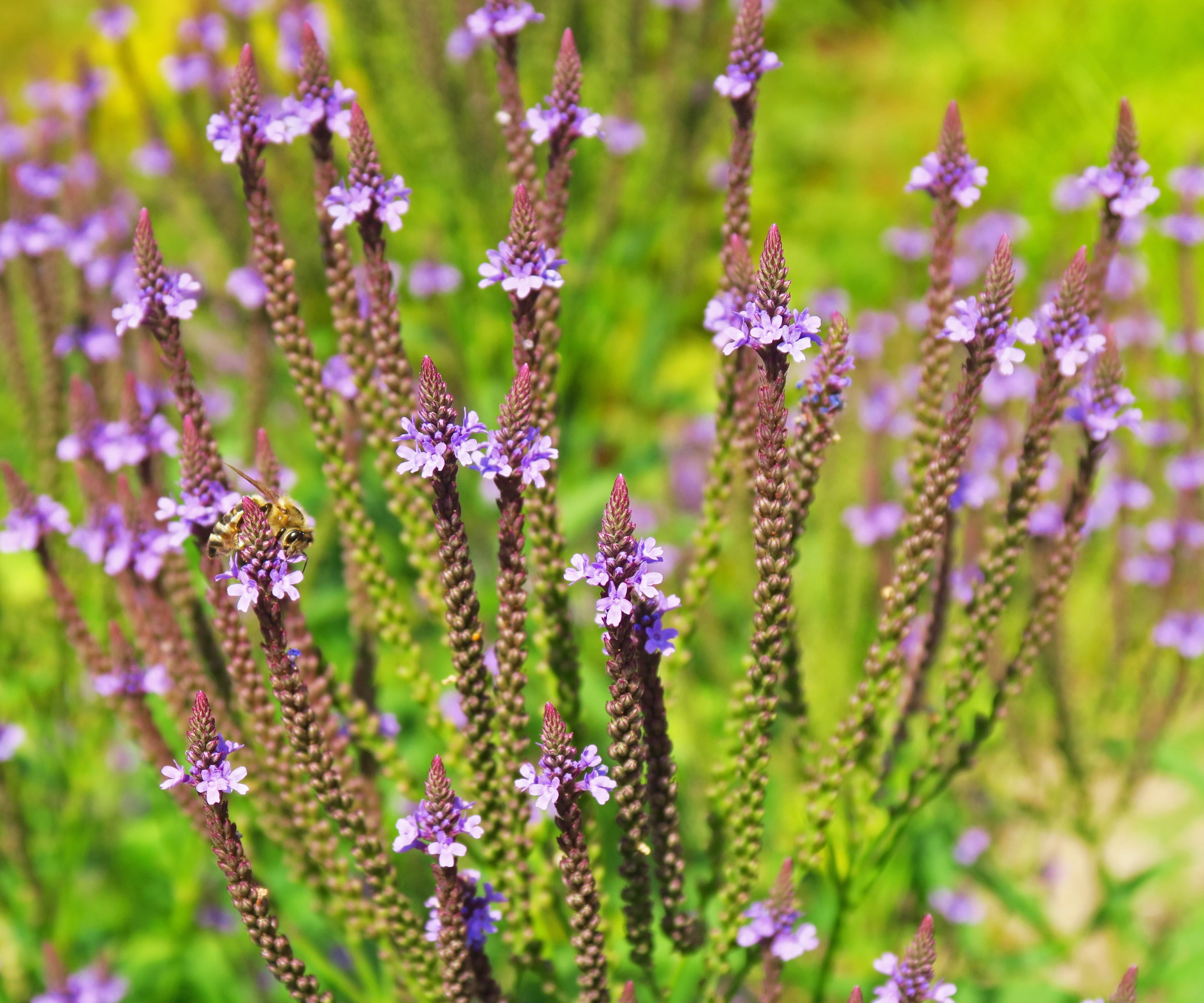
'Verbenas are impactful perennials wherever they are grown,' says Ali McEnhill, plant expert and owner of the Old Dairy Nursery in the Hudson Valley. With tall stems that can reach up to six feet in height, verbena plants are sure to add drama to your borders and pots.
'For a late-blooming native perennial, try growing Verbena hastata, commonly known as blue vervain,' Ali continues. Thriving in cool regions 'down to US hardiness zone 5, this species will tolerate scorching summers and frozen winters.' Native blue vervain seeds are available from Walmart.
Plant in an open, sunny yard with well-draining soil, cutting back in late winter to allow wildlife to snack on any remaining seeds in the fall months.
6. Common boneset
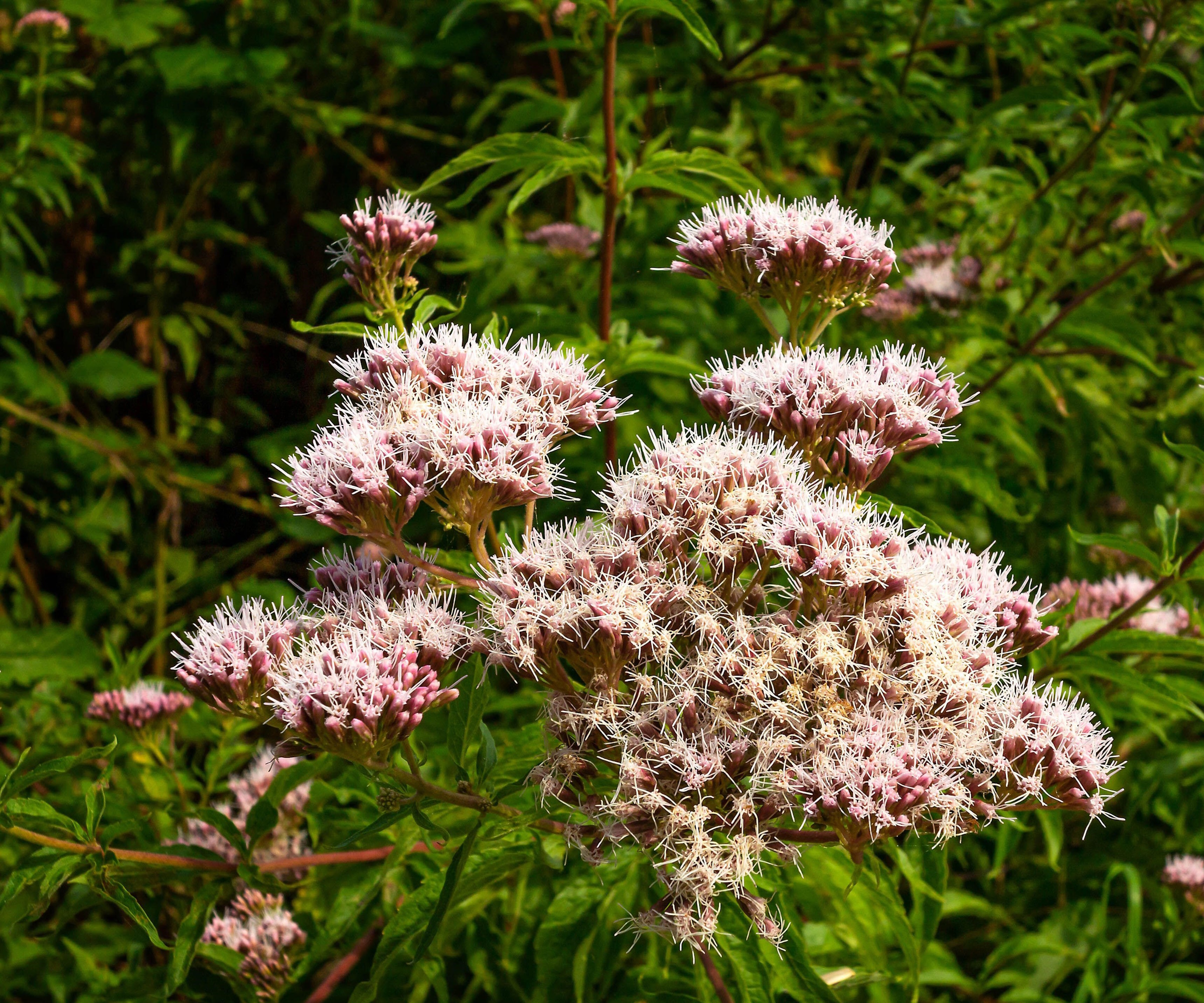
Common boneset, Eupatorium perfoliatum, is a versatile, native perennial that not only looks good but will help to attract late-summer pollinators, including sweat bees, carpenter bees and bumble bees. Clusters of white blooms open from August, lasting until mid-fall during mild years.
Growing up to four feet tall, common boneset is found across much of the United States, thriving in wetland habitats from US hardiness zone 2 to US hardiness zone 10.
If you struggle with damp, waterlogged soil, I recommend planting this tough native perennial, just be sure to give it plenty of space to establish and grow.
7. Obedient plant
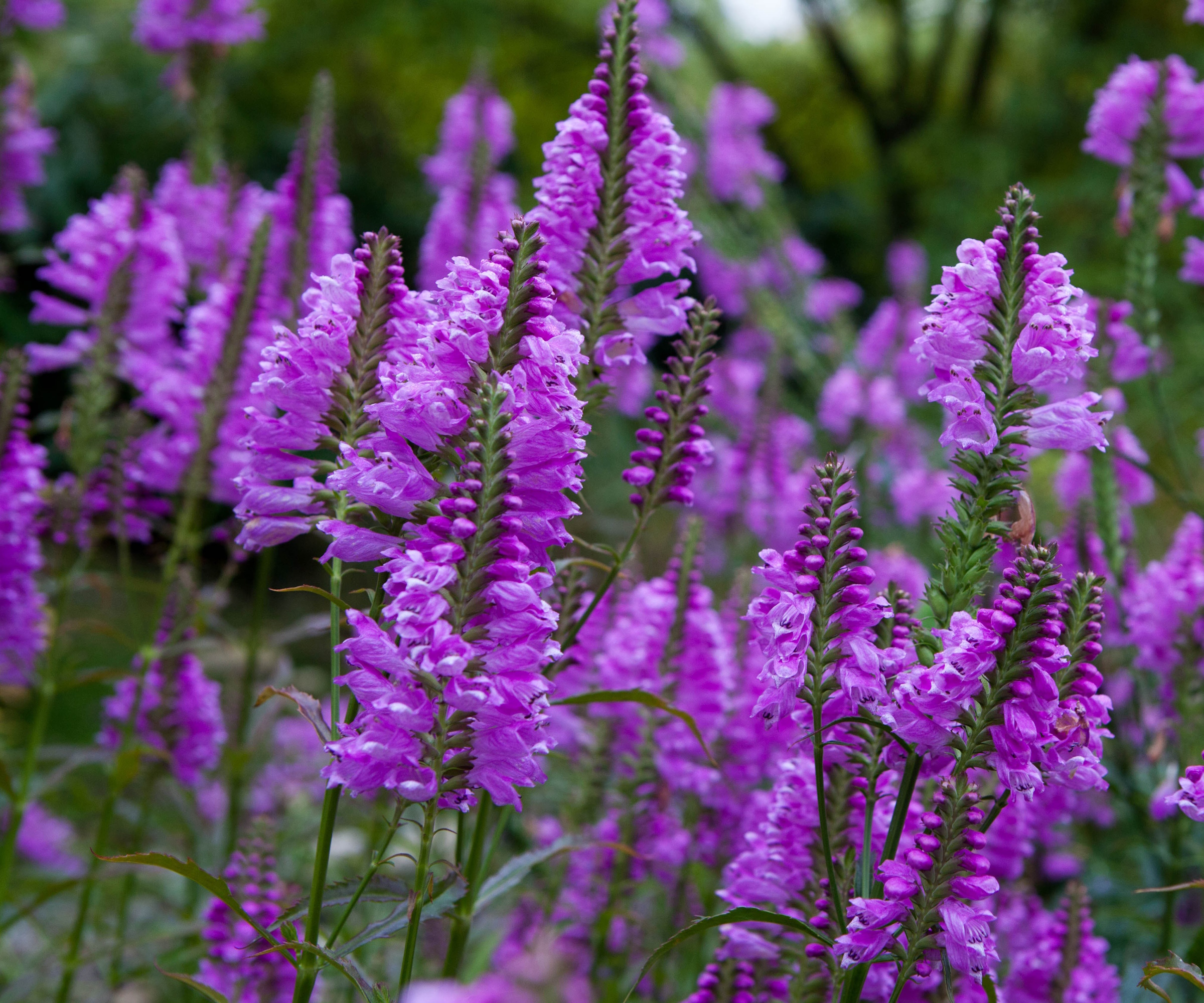
The obedient plant, Physostegia virginiana or false dragonhead is a striking perennial with snapdragon-like flowers that open in shades of pink, white, or purple. This plant prefers full sun to partial shade and well-drained soil, but it is generally adaptable to a variety of conditions down to US hardiness zone 6.
Once established, the obedient plant will spread quickly, making it an excellent choice for sizeable garden borders. I recommend planting towards the front of your beds, as this compact species will rarely grow taller than one to two feet.
Late summer and early fall is a good time to stock up on obedient plant seeds, available from Amazon, ensuring that you are ready to sow them in late fall after the first frost.
FAQs
What is the best fall-blooming native plant to grow in a pot?
'One of my favorite native wildflowers would have to be echinacea, commonly known as coneflowers,' says garden expert Sam Niemann. 'There are many different coneflower varieties that can be found in a range of colors. What's more, this tough perennial will reappear year after year.
'They thrive in full sun and are drought-tolerant, making them a versatile choice for both wild landscapes and cultivated gardens,' Sam adds. 'In addition, they can grow just fine in a pot. Just be sure to water and feed during spring and summer, preventing the soil from drying out.'
Coneflower live plants can be ordered online from Walmart.
Even as the days get shorter and the cold sets in, deadheading your fall-blooming native plants will extend flowering in your yard. Spending just a few minutes each day snipping the stems of faded blooms can help to encourage those extra, bonus stems late in the year. Towards November, however, leave some stems to go to seed, which will be a good snack for birds and wildlife, and allow you to stock up on seeds. See our guide on how to harvest coneflower seeds for more information.







